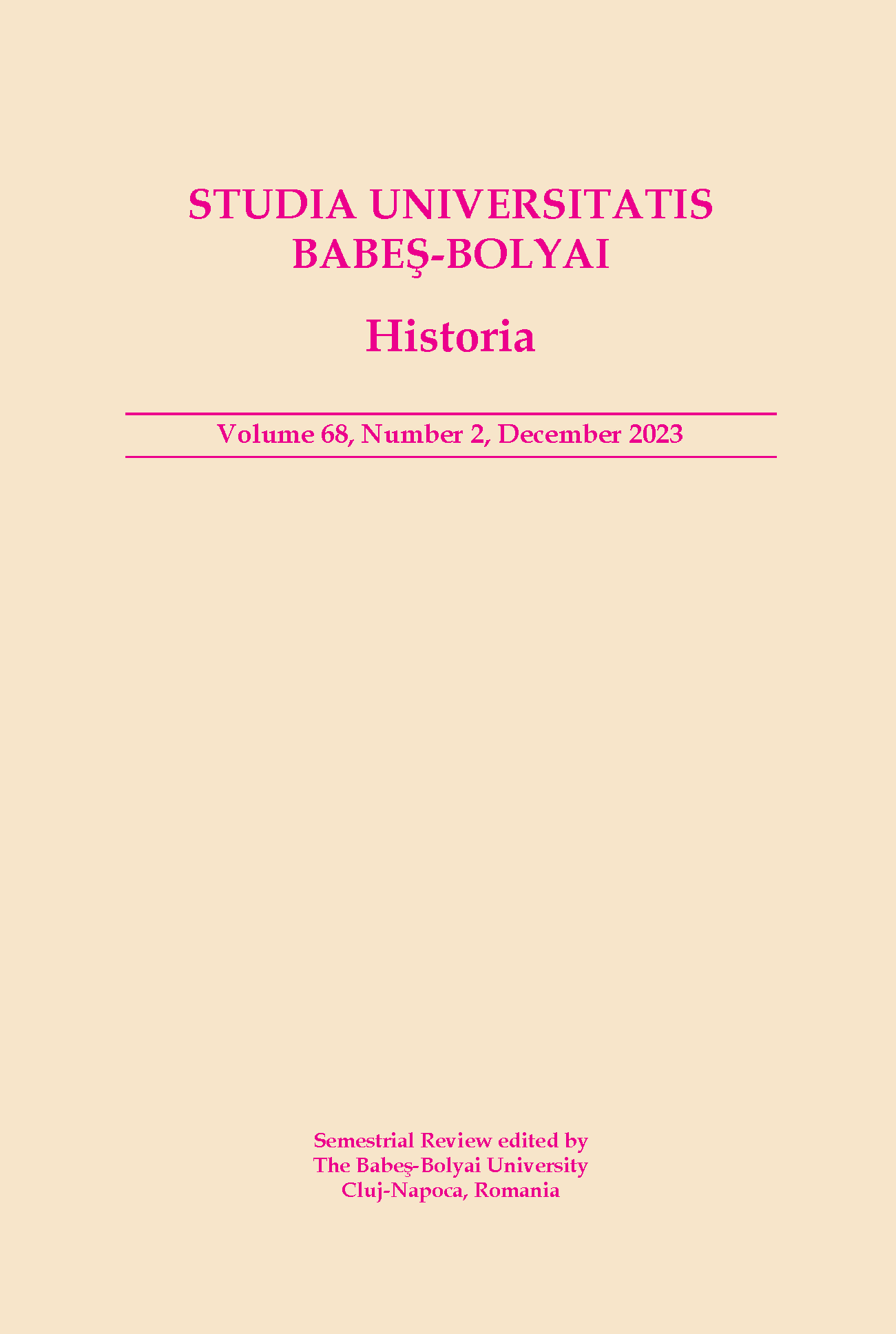Researching Everyday Life in the Main Urban Centres of Late Medieval Transylvania. The Model of Transylvanian Cities of German Foundation and Tradition. II. Theoretical and Methodological Perspectives
DOI:
https://doi.org/10.24193/subbhist.2023.2.01Keywords:
History of Everyday Life, Urban History, Transylvanian Saxons, Late Medieval and Premodern Archaeology and Material Culture, Late Medieval and Premodern TransylvaniaAbstract
A theoretical-methodological reflection must be situated at the beginning of any historical approach, with the aim of individualizing the discipline of the history of everyday (medieval) life and differentiating it as an independent branch of research.* The most important aspects of the investigation consist in: a) formulating clear questions and b) defining the goals of knowledge/understanding, to eliminate the risk of ending up with a simple collection of anecdotes – which, while undeniably captivating, cannot be considered science, and, consequently, becomes part of literature. In its elementary form, daily life is a simple manipulation of certain constants – the environment, people and things, understood through the daily repetition of certain activities, which become habits and are then performed mechanically. It is often stated that the history of everyday life does not have its own method, and it follows the analysis grids of history, more precisely of its auxiliary disciplines. Moreover, the history of everyday life remains dependent on the help of other sciences. In this context, the research is interdisciplinary, involving most of the auxiliary or frontier sciences of history: history of law, archaeology, literature and philology, music and art history, historical geography and ethnography, etc.
Research schedule and analysis grid. Based on the historiographic documentation, the theoretical-methodological excursion and the identification of the potential and the limits of the available sources, the perspective that this study proposes is that of a research program dedicated to the reconstruction of the history of everyday life in the late medieval Transylvanian urban centres. The proposed approach is organized into three distinct sections: a) that of the recomposing of frames and the dynamics of daily urban life; b) that of revealing the fundamental structures of everyday life in cities and c) that of identifying the challenges and solutions assumed by the day-to-day existence of individuals, groups and the urban community.
*The chosen methodological model has been adopted and modified according to the analysis-interpretation grid proposed by Gerhard Jaritz, Zwischen Augenblick und Ewigkeit. Einführung in die Alltagsgeschichte des Mittelalters (Wien, Graz, Köln: Böhlau 1989), 15-26.
Rezumat. Reflexia teoretic-metodologică trebuie să stea la începutul oricărui demers istoric, având ca scop individualizarea disciplinei istoriei vieţii cotidiene (medievale) şi delimitarea acesteia ca ramură independentă a cercetării.* Cele mai importante aspecte ale investigaţiei constau în: a) formularea de întrebări clare şi b) definirea scopurilor cunoaşterii/înţelegerii, pentru eliminarea riscului de a realiza o simplă culegere de anecdote – care poate fi foarte interesantă, însă nu mai poate fi apreciată drept ştiinţă, ci devine literatură. În forma sa elementară, viaţa cotidiană este o simplă manipulare a unor constante – mediu înconjurător, oameni şi lucruri, înţelese prin repetarea zilnică a unor activităţi, care devin obişnuinţă şi sunt îndeplinite apoi mecanic. Se afirmă adeseori că istoria vieţii cotidiene nu are o metodă proprie, urmând grilele de analiză ale istoriei, respectiv ale disciplinelor auxiliare acesteia. De asemenea, istoria vieţii cotidiene rămâne obligată ajutorului altor ştiinţe. În acest context, cercetarea este una interdisciplinară, implicând majoritatea ştiinţelor auxiliare sau de frontieră ale istoriei: istoria dreptului, arheologia, literatura şi filologia, muzica şi istoria artei, geografia istorică şi etnografia, etc.
Programul de cercetare şi grila de analiză. În baza documentării istoriografice, a excursului teoretic-metodologic şi a identificării potenţialului şi a limitelor surselor disponibile, perspectiva pe care acest studiu îl propune este aceea a unui program de cercetare dedicat reconstituirii istoriei vieţii cotidiene în centrele urbane ale Transilvaniei medievale târzii într-o abordare structural-tripartită: a) cea a recompunerii cadrelor şi a dinamicii vieţii cotidiene urbane; b) cea a relevării structurilor fundamentale ale vieţii de zi cu zi din oraşe şi c) cea a identificării provocărilor şi soluţiilor presupuse de existenţa de zi cu zi a indivizilor, grupurilor şi comunităţii urbane.
*Modelul metodologic avut în vedere este preluat şi adaptat după grila de analiză-interpretare propusă de către Gerhard Jaritz, Zwischen Augenblick und Ewigkeit. Einführung in die Alltagsgeschichte des Mittelalters (Wien, Graz, Köln: Böhlau 1989), 15-26.
Cuvinte-cheie: istoria vieţii cotidiene, istorie urbană, saşi ardeleni, arheologie şi cultură materială medievală târzie şi premodernă, Transilvania medievală târzie şi premodernă
Article: history; Received: 12.12.2023; Revised: 23.12.2023 Accepted: 29.12.2023; Available online: 30.01.2024
Downloads
Published
How to Cite
Issue
Section
License
Copyright (c) 2024 Studia Universitatis Babeș-Bolyai Historia

This work is licensed under a Creative Commons Attribution-NonCommercial-NoDerivatives 4.0 International License.






